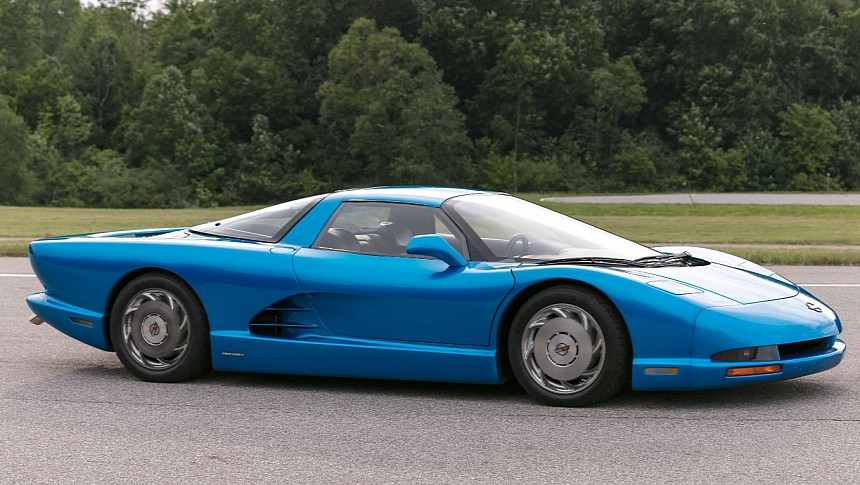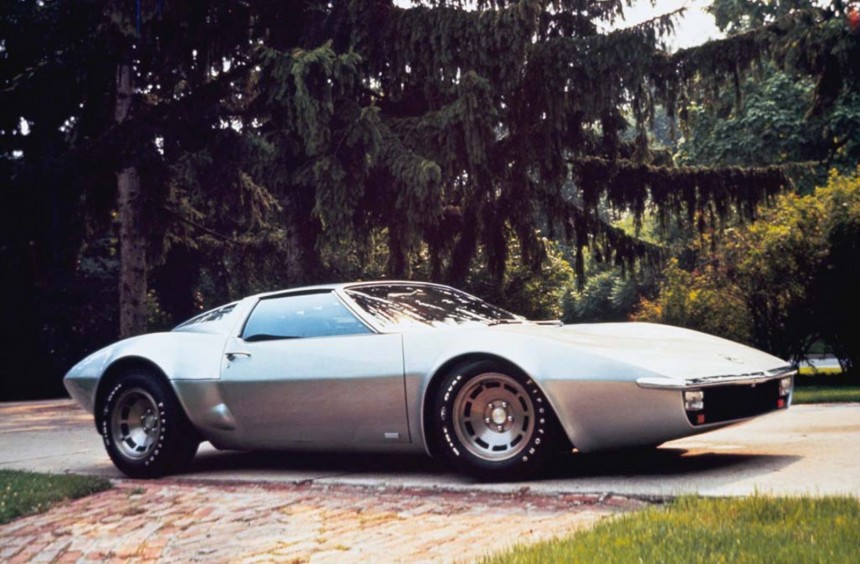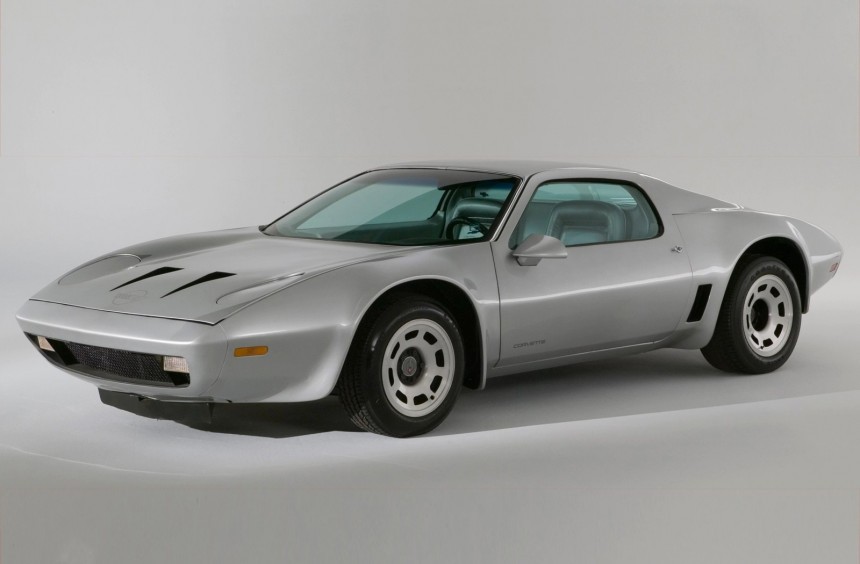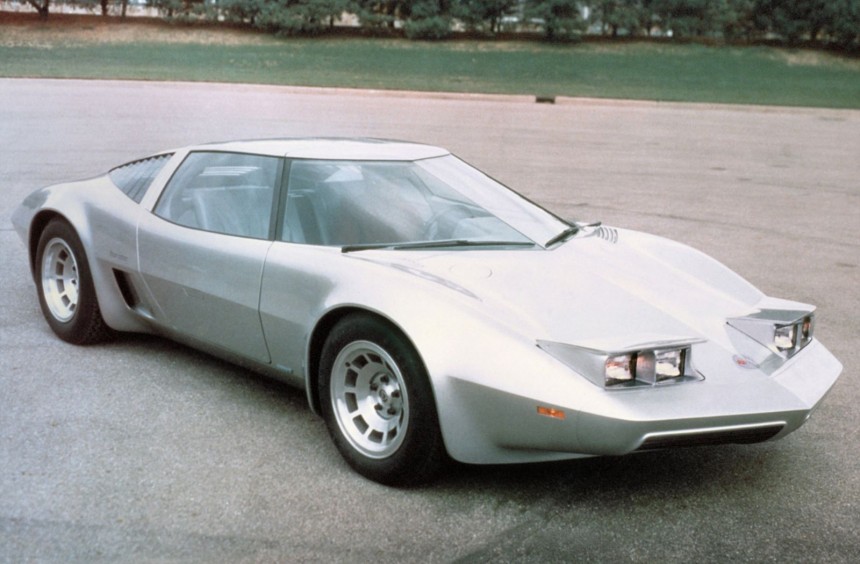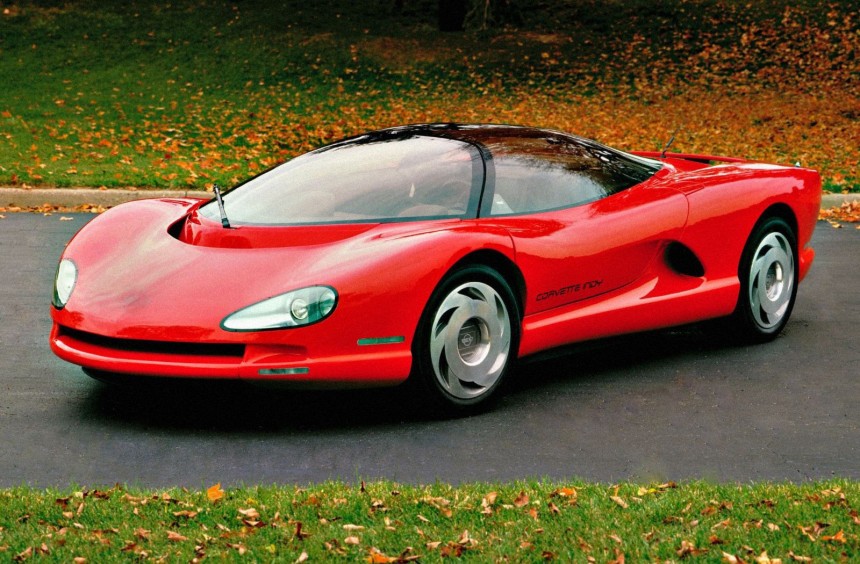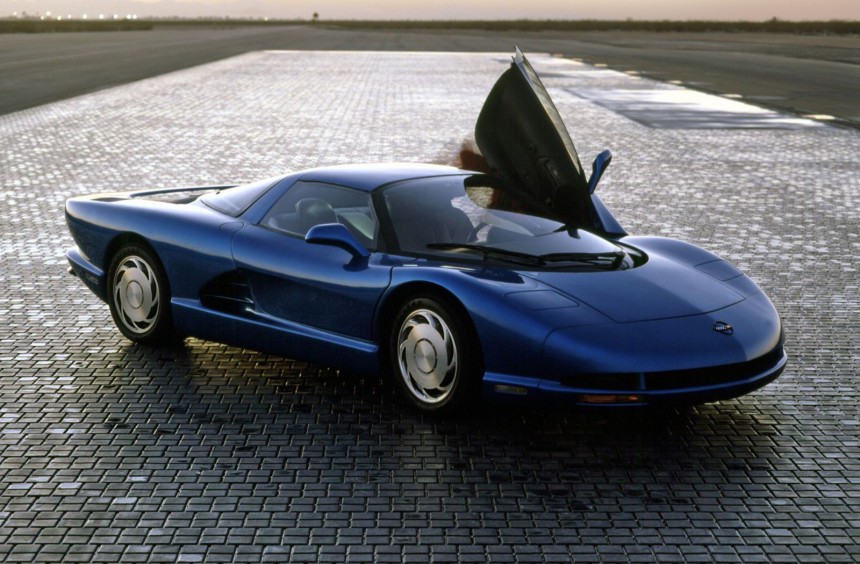Though it was the first production version to employ a mid-engine configuration, the eight-generation was not the first mid-engine Corvette.
First unveiled on July 18, 2019, in Tustin, California, after years of rumors and teasers, the C8 finally gave fans the proper mid-engine layout that some had been dreaming about for decades.
However, as you may (or may not) know, the idea of a rear mid-engined Corvette is as old as the model itself.
Zora Arkus-Duntov, the legendary engineer who worked on the first three generations of the model, earning the nickname "Father of the Corvette," was a proponent of the rear mid-engine layout since before the C1 was unleashed on public roads.
In 1959, he began developing the CERV I (Chevrolet Experimental Racing Vehicle), a single-seat, mid-engine race car that showcased the advantages of the layout.
Four years later, the single-seater was followed up by the two-seat, open-top CERV II race car that took the concept to another level.
Then, from the late 1960s onwards, Arkus-Duntov led the development of several production-oriented, mid-engine Corvettes, some of which came close to mass production.
After the famed engineer left Chevy in 1975, his legacy lived on through another series of mid-engine Corvette concepts.
While the XP-819 and XP-880 (or Astro II) predate it, the XP-882 unveiled at the 1970 New York Auto Show was the first mid-engine production proposal to feature Corvette badges.
The culmination of a two-year development process, this stunning low-slung, wedge-shaped concept was aimed at competing with Lamborghini's innovative Miura, DeTomaso's upcoming Pantera, or Ferrari's Dino 206 GT.
Smaller and lighter than a C3, the concept featured a transverse-mounted, 400-ci (6.5-liter) small-block V8 linked to a three-speed Turbo 400 automatic borrowed from the Olds Toronado.
Met with an overwhelmingly positive response from the public and the press, the XP-882 was nearly approved for production, but ultimately, it never made it past the prototype stage.
Though not one but two examples were eventually built, both would end up being transformed into the following two mid-engine Corvettes on our list.
This experimental prototype came into being after Chevrolet's general manager, John DeLorean, instructed a design team headed by Bill Mitchell to construct a new body for one of the XP-882 concepts.
The result was a much rounder yet still aggressive-looking structure, but while it was visually appealing, it was made from steel panels that made the entire concept heavier than a production C3.
To solve this problem that had unwanted repercussions on overall performance, Mitchell commissioned GM partners Reynolds Metals to construct an aluminum body, which turned out to be 450 pounds (204 kg) lighter.
Nicknamed Reynolds Aluminum Corvette, the XP-895 was completed in the summer of 1972. Since mass-producing the aluminum body was deemed too complex and expensive, series production of this mid-engine concept was never considered.
The second of the two XP-882 concepts was stripped of its original body, while the chassis was used for GM's ambitious Wankel project.
While Zora Arkus-Duntov despised the rotary engine, deeming it inefficient and unreliable, GM president Ed Cole more or less politely convinced him to build a mid-engine four-rotor Corvette.
Arkus-Duntov handed the task to Gib Hufstader, his most talented engineer, who developed not one but two dual-rotor engines for the still body-less chassis.
The two motors were placed mid-ship, one on each side of the driveshaft, and produced around 350 hp combined.
The new body, conceived by Hank Haga and Jerry Palmer under Bill Mitchell's direct supervision, took a little longer to develop, but when completed, it made everyone at Chevy stand up and applaud.
The four-rotor prototype made its debut at the 1973 Paris show. Soon after, Ed Cole ended the Wankel project, and the car received a conventional powerplant. It was renamed Aerovette and continued to tour the world's most prestigious motor shows without hopes of making it into production.
After almost a decade without any mid-engine Corvette concepts, Chevrolet surprised everyone with the gorgeous Corvette Indy at the 1986 North American International Auto Show.
Developed under the watchful eye of Chuck Jordan, Chevy's Vice President of Design at the time, the Corvette Indy made jaws drop with its curvacious, aircraft-inspired carbon-kevlar body.
But the body wasn't the concept's only jaw-dropping feature. It came with a four-wheel-drive system, four-wheel-steering, active suspension, and several CRT screens.
Two were connected to cameras and functioned as rearview mirrors, one replaced the traditional gauges, and the fourth displayed navigation info currency of an integrated, military-grade GPS.
The cherry on top (in the middle) was a 2.65-liter 600-hp twin-turbo Indy V8, which, as the name implies, was initially developed for Roger Penske's CART (now IndyCar) team.
Apart from the Indy V8-powered concept, a second car with a fiberglass body and a more conventional 5.7-liter V8 was constructed.
The Corvette Indy was purely a show car, but its immediate successor, the CERV III, came close to becoming the first mass-produced mid-engine Corvette.
The Corvette Indy concept had such a profound impact on the public, press, and, of course, GM management that a follow-up project was given the green light shortly after its unveiling.
Named CERV III, in honor of Zora Arkus-Duntov's previous prototypes, the last mid-engine Corvette concept received a thorough redesign that made it more production-worthy, albeit without distilling the look that made the Indy special.
It carried over its predecessor's innovative technologies, such as all-wheel-steering, four-wheel-drive, and active suspension, ditching the race engine for a more "steetable" V8.
The engine in question was the one and only Lotus-designed LT5, which made it under the hood of the C4 ZR-1 later that year.
However, the CERV III's version was equipped, among other bespoke components, with a pair of Garret T3 turbochargers that improved output to 650 hp.
GM management strongly considered producing the car, but after doing the math and realizing that it would have to sell for a base price ten times higher than the standard C3 in a period of financial instability, they decided to pull the plug on the project.
Thankfully, the dream of a mid-engine Corvette didn't stop there, and three decades later, it finally became reality.
However, as you may (or may not) know, the idea of a rear mid-engined Corvette is as old as the model itself.
Zora Arkus-Duntov, the legendary engineer who worked on the first three generations of the model, earning the nickname "Father of the Corvette," was a proponent of the rear mid-engine layout since before the C1 was unleashed on public roads.
In 1959, he began developing the CERV I (Chevrolet Experimental Racing Vehicle), a single-seat, mid-engine race car that showcased the advantages of the layout.
Four years later, the single-seater was followed up by the two-seat, open-top CERV II race car that took the concept to another level.
Then, from the late 1960s onwards, Arkus-Duntov led the development of several production-oriented, mid-engine Corvettes, some of which came close to mass production.
After the famed engineer left Chevy in 1975, his legacy lived on through another series of mid-engine Corvette concepts.
1970 Corvette XP-882
The culmination of a two-year development process, this stunning low-slung, wedge-shaped concept was aimed at competing with Lamborghini's innovative Miura, DeTomaso's upcoming Pantera, or Ferrari's Dino 206 GT.
Smaller and lighter than a C3, the concept featured a transverse-mounted, 400-ci (6.5-liter) small-block V8 linked to a three-speed Turbo 400 automatic borrowed from the Olds Toronado.
Met with an overwhelmingly positive response from the public and the press, the XP-882 was nearly approved for production, but ultimately, it never made it past the prototype stage.
Though not one but two examples were eventually built, both would end up being transformed into the following two mid-engine Corvettes on our list.
1972 Corvette XP-895
The result was a much rounder yet still aggressive-looking structure, but while it was visually appealing, it was made from steel panels that made the entire concept heavier than a production C3.
To solve this problem that had unwanted repercussions on overall performance, Mitchell commissioned GM partners Reynolds Metals to construct an aluminum body, which turned out to be 450 pounds (204 kg) lighter.
Nicknamed Reynolds Aluminum Corvette, the XP-895 was completed in the summer of 1972. Since mass-producing the aluminum body was deemed too complex and expensive, series production of this mid-engine concept was never considered.
1973 Corvette Four-Rotor
While Zora Arkus-Duntov despised the rotary engine, deeming it inefficient and unreliable, GM president Ed Cole more or less politely convinced him to build a mid-engine four-rotor Corvette.
Arkus-Duntov handed the task to Gib Hufstader, his most talented engineer, who developed not one but two dual-rotor engines for the still body-less chassis.
The two motors were placed mid-ship, one on each side of the driveshaft, and produced around 350 hp combined.
The new body, conceived by Hank Haga and Jerry Palmer under Bill Mitchell's direct supervision, took a little longer to develop, but when completed, it made everyone at Chevy stand up and applaud.
The four-rotor prototype made its debut at the 1973 Paris show. Soon after, Ed Cole ended the Wankel project, and the car received a conventional powerplant. It was renamed Aerovette and continued to tour the world's most prestigious motor shows without hopes of making it into production.
1986 Corvette Indy
Developed under the watchful eye of Chuck Jordan, Chevy's Vice President of Design at the time, the Corvette Indy made jaws drop with its curvacious, aircraft-inspired carbon-kevlar body.
But the body wasn't the concept's only jaw-dropping feature. It came with a four-wheel-drive system, four-wheel-steering, active suspension, and several CRT screens.
Two were connected to cameras and functioned as rearview mirrors, one replaced the traditional gauges, and the fourth displayed navigation info currency of an integrated, military-grade GPS.
The cherry on top (in the middle) was a 2.65-liter 600-hp twin-turbo Indy V8, which, as the name implies, was initially developed for Roger Penske's CART (now IndyCar) team.
Apart from the Indy V8-powered concept, a second car with a fiberglass body and a more conventional 5.7-liter V8 was constructed.
The Corvette Indy was purely a show car, but its immediate successor, the CERV III, came close to becoming the first mass-produced mid-engine Corvette.
1990 Corvette CERV III
Named CERV III, in honor of Zora Arkus-Duntov's previous prototypes, the last mid-engine Corvette concept received a thorough redesign that made it more production-worthy, albeit without distilling the look that made the Indy special.
It carried over its predecessor's innovative technologies, such as all-wheel-steering, four-wheel-drive, and active suspension, ditching the race engine for a more "steetable" V8.
The engine in question was the one and only Lotus-designed LT5, which made it under the hood of the C4 ZR-1 later that year.
However, the CERV III's version was equipped, among other bespoke components, with a pair of Garret T3 turbochargers that improved output to 650 hp.
GM management strongly considered producing the car, but after doing the math and realizing that it would have to sell for a base price ten times higher than the standard C3 in a period of financial instability, they decided to pull the plug on the project.
Thankfully, the dream of a mid-engine Corvette didn't stop there, and three decades later, it finally became reality.
